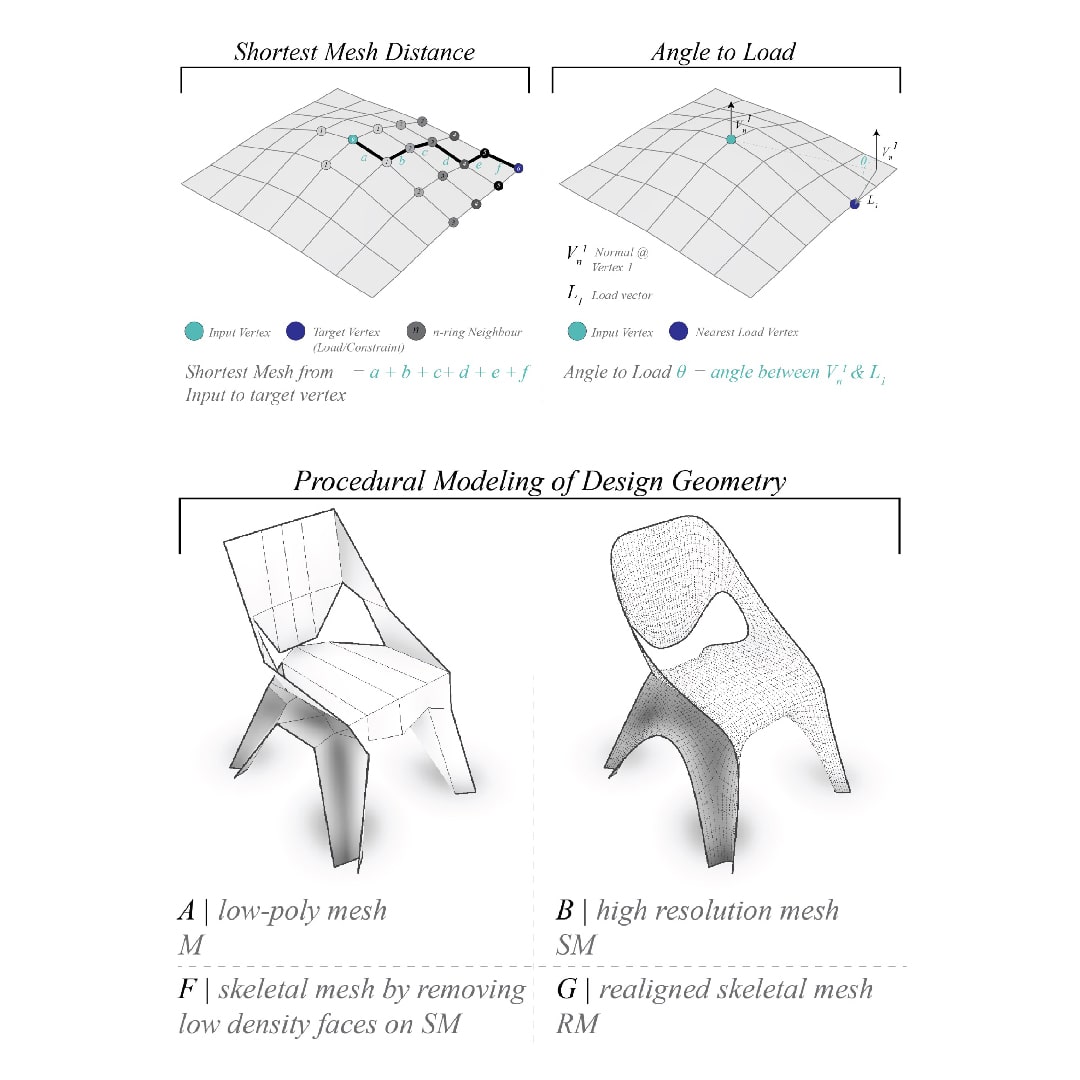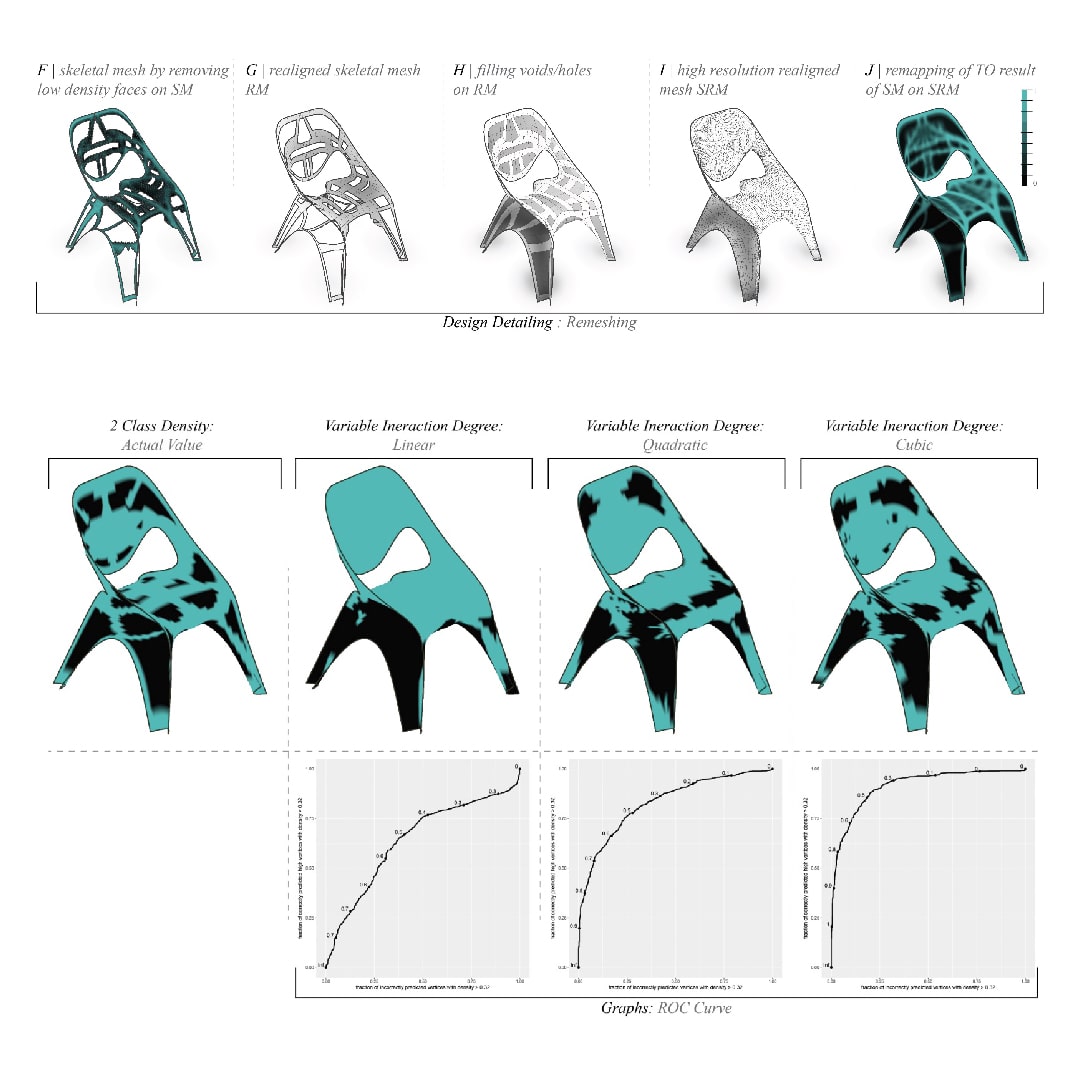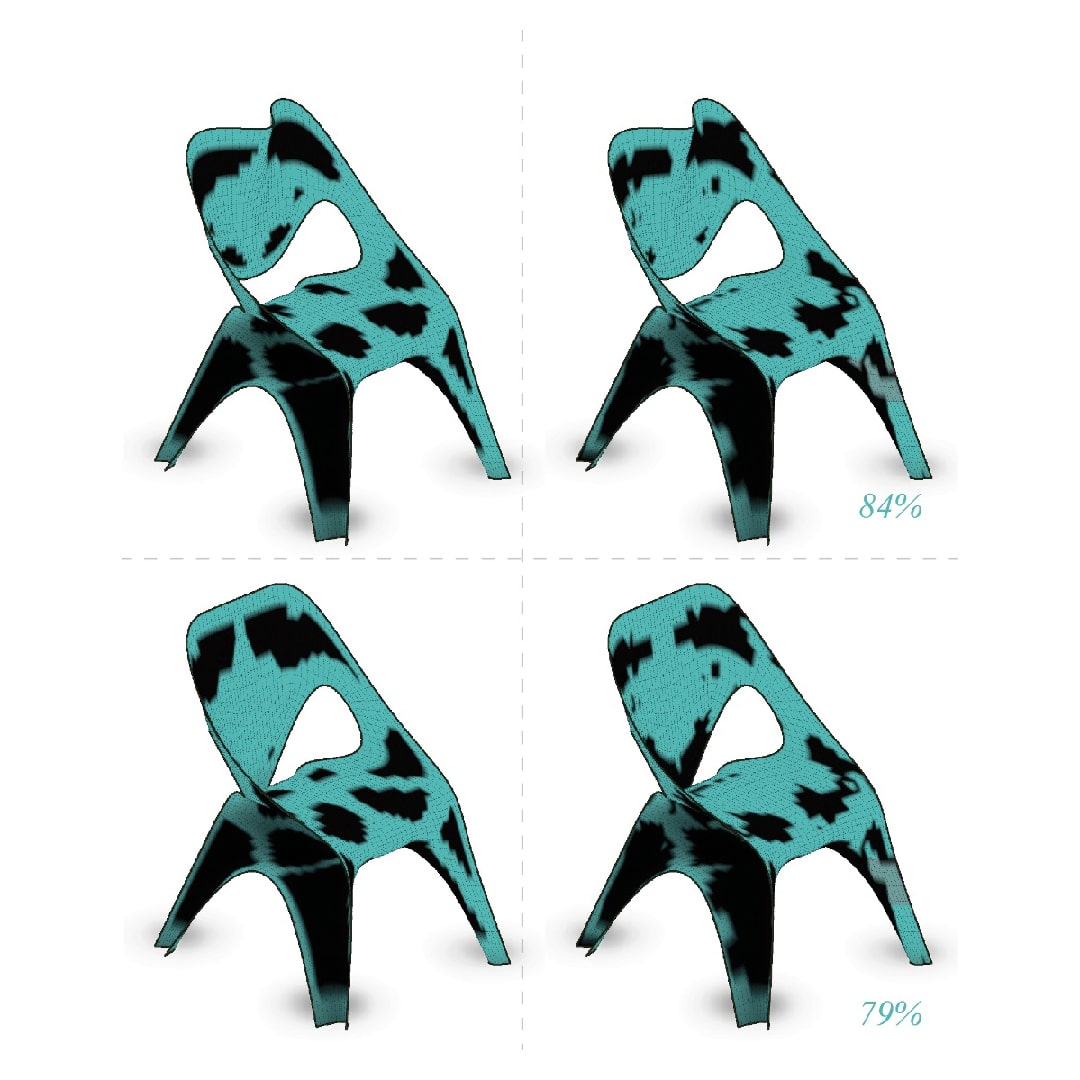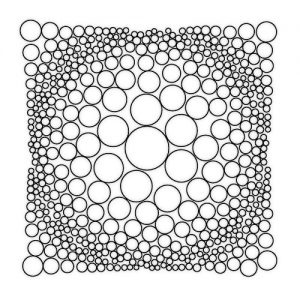Topology Optimization
3D-Printing, Topology Optimization and Statistical Learning: A Case Study
Vishu Bhooshan, Mathias Fuchs and Shajay Bhooshan
Zaha Hadid Architects, Computation & Design Research Group (ZH CODE) 10 Bowling Green Lane London, UK EC1R 0BQ
This research paper explores the use of 3D-printing technologies in prototyping of Topology Optimization (TO) driven design.
The paper describes the integration of TO into an early design work-flow and highlights the difficulties thereof. Due to the high computation times of TO, we outline the use of statistical learning to approximate TO material density results.
 Specifically, we highlight the use of such techniques for TO of thin-shell, minimal surface chair geometries and the incorporation of specific assumptions related to such geometries to improve the functional approximation using statistical methods. We describe the various stages of the design pipeline that benefit from interactive TO.
Specifically, we highlight the use of such techniques for TO of thin-shell, minimal surface chair geometries and the incorporation of specific assumptions related to such geometries to improve the functional approximation using statistical methods. We describe the various stages of the design pipeline that benefit from interactive TO.
 3D-printing, a layer-by-layer additive manufacturing technique is typically used to deliver geometrically precise, functional prototypes in a short period of time.
3D-printing, a layer-by-layer additive manufacturing technique is typically used to deliver geometrically precise, functional prototypes in a short period of time.
It has emerged as one of the key rapid prototyping technologies in the field of product design and in large scale architectural design.
 The paper is prompted by the experiences of using TO for the design and manufacture of a chair using higher solution 3D-printing technologies.
The paper is prompted by the experiences of using TO for the design and manufacture of a chair using higher solution 3D-printing technologies.
The prediction improved, as anticipated, when passing from the linear over the quadratic to the cubic model. The evaluation of the model was done on the final chair’s geometry.
 The current production process prohibits the usage of smooth gradients, due to the limited number of colors available in the material color catalog.
The current production process prohibits the usage of smooth gradients, due to the limited number of colors available in the material color catalog.
The constraints of the printer provided by Stratasys also governed the use of constant material properties for the production shells in the 3D-printed prototypes.
 We propose to build on research of voxel based/ data driven material as a transfer of production information with the printer in order to create smooth gradients in color and multi-material prints.
We propose to build on research of voxel based/ data driven material as a transfer of production information with the printer in order to create smooth gradients in color and multi-material prints.
Our design work flow incorporating TO is easily amenable to generate data on material property variation based on structural results.




























Comments